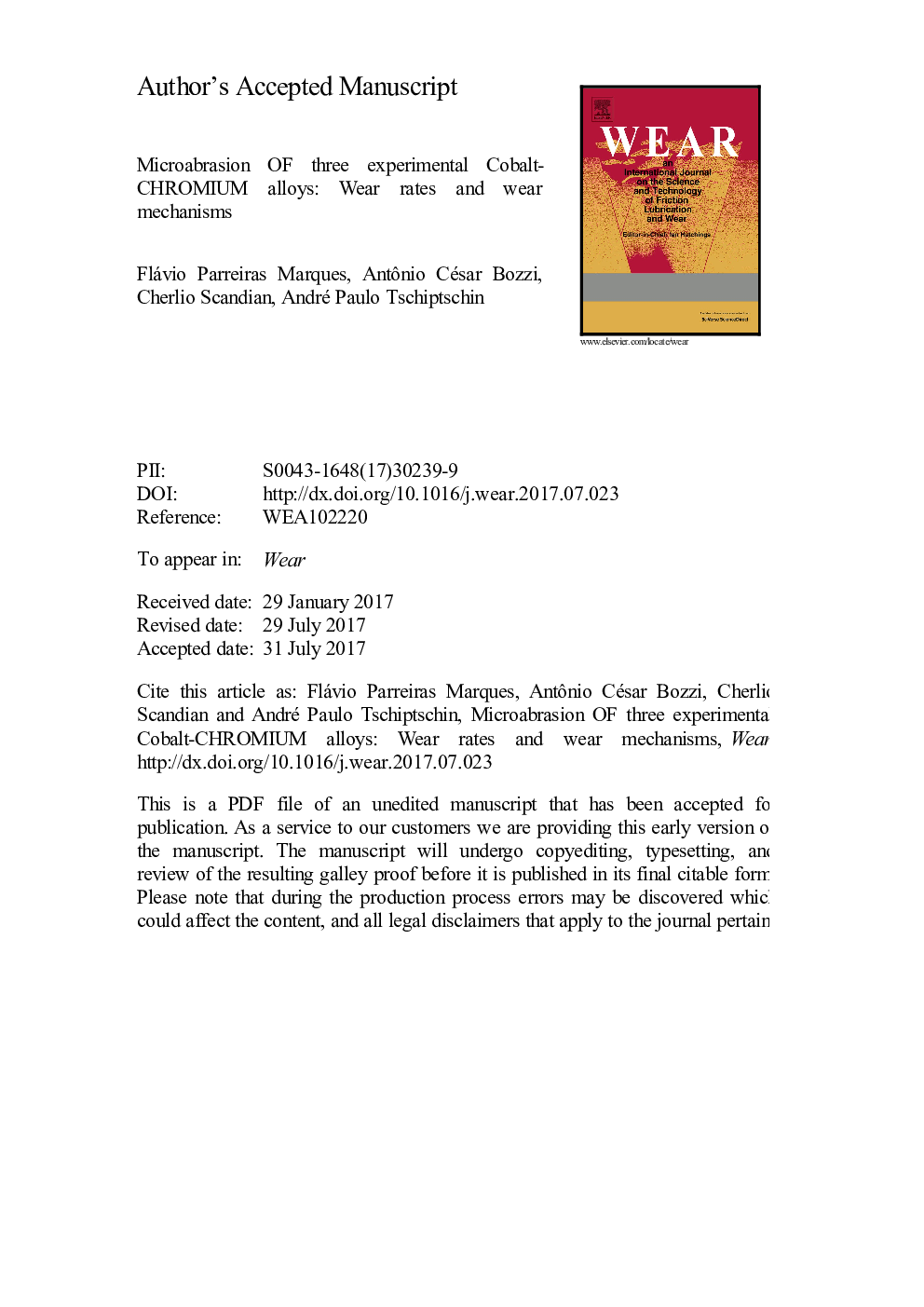| Article ID | Journal | Published Year | Pages | File Type |
|---|---|---|---|---|
| 4986382 | Wear | 2017 | 25 Pages |
Abstract
Cobalt-chromium alloys are known for their excellent wear resistance. Many studies on the wear behavior of these alloys were reported in literature. Nevertheless, microabrasive wear still lacks extensively investigation. Microabrasive wear behavior, of three experimental cobalt alloys, was investigated: Alloy 1 similar to Stellite 250, 48Â wt% Co, 29Â wt% Cr, 19Â wt% Fe; Alloy 2 similar to Stellite 6, 64Â wt% Co, 24Â wt% Cr, 4.2Â wt%Â W, 2,3Â wt% and Alloy 3 similar to Tribaloy - T400, 56Â wt% Co, 8.5Â wt% Cr, 29Â wt% Mo, 3.3Â wt% Si. These alloys are being used for manufacturing guides for hot rolling seamless steel pipes. Alloy 2 and Alloy 3 are being tested as wear segments used inside a 2nd generation ethanol reactor. Tests were performed using three 0.1Â g/cm3 slurries composed by SiO2, Al2O3, and SiC particles, in a distilled water suspension. A load of 0.3Â N was applied, the rotational speed was 20Â rpm and the total sliding distance 48Â m. Analysis of the alloys' tribosurfaces - by Optical Microscopy, Scanning Electron Microscopy and Contact Stylus Profilometry - showed abrasive size, shape and hardness may influence wear coefficients significantly. Tests performed with SiC and Al2O3 slurries resulted in greater wear rates than those with SiO2 slurry. Alloy 1 showed the greatest wear coefficient, in comparison with the other two experimental alloys, due to the absence of hard second phase precipitates in its microstructure. The variation of the wear coefficients as a function of abrasive hardness (Ha) and the compound alloy hardness (Hs) showed a linear correlation (R2 = 0.73). Two-body abrasion (grooving wear) was the dominant wear micro-mechanism observed for all tests. Alloy 2, containing Laves phase showed a transition from ductile to brittle wear mechanism when tested with alumina slurries. The SiC slurry gave the highest worn volume among the three tested slurries.
Related Topics
Physical Sciences and Engineering
Chemical Engineering
Colloid and Surface Chemistry
Authors
Flávio Parreiras Marques, Antônio César Bozzi, Cherlio Scandian, André Paulo Tschiptschin,
